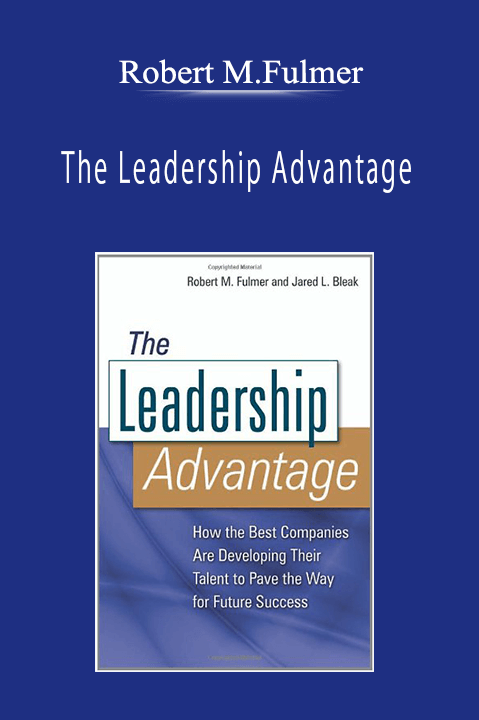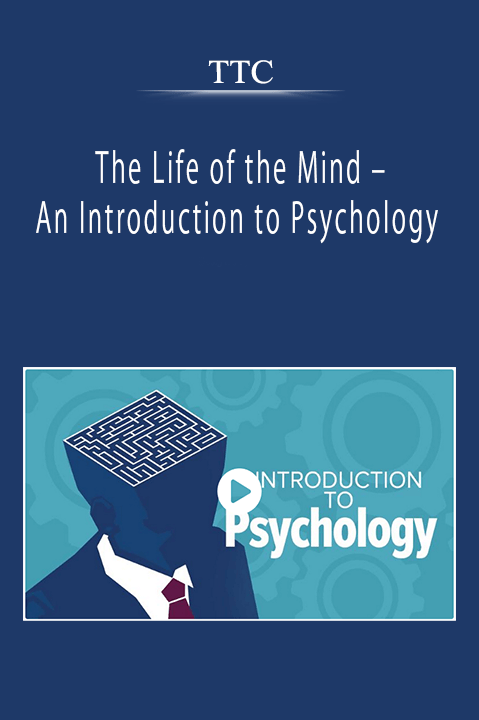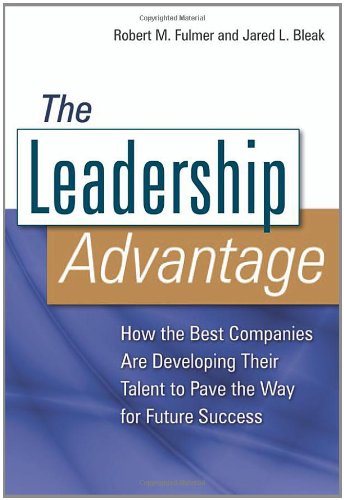Robert M.Fulmer – The Leadership Advantage
The best competitive weapon any company can have is its up-and-coming leaders. The Leadership Advantage shows companies what some exceptional organizations are doing to develop their best and brightest. Based on substantial research and featuring the results of a 2006 study conducted by Duke Corporate Education, APQC, and the Center for Creative Leadership, Robert M. Fulmer and Jared L. Bleak show how these companies:
• create learning opportunities for individual employees as well as the entire company
• maintain a strong partnership between line managers and human resources
• develop high-potential employees
• evaluate success by measuring company-wide achievement
• tie leadership development to business goals
Featuring illuminating case studies of companies like Caterpillar, Cisco Systems, and PepsiCo that have made leadership development an integral part of their business strategy, The Leadership Advantage will ensure that today’s businesses have the tools to help their most promising talent reach their greatest potential and to create a company-wide culture of excellence.
About the Author
Robert M. Fulmer, Ph.D. (Santa Barbara, CA) is Academic Director of Duke Corporate Education and Distinguished Visiting Professor at Pepperdine University. He has written or coauthored 15 books, including The Leadership Investment (978-0-8144-0558-1) and Growing Your Company’s Leaders (978-0-8144-0767-7).
Jared L. Bleak, Ph.D. (Durham, NC) is a Managing Director at Duke Corporate Education, where he designs and delivers educational programs that meet clients’ strategic challenges.
Excerpt. © Reprinted by permission. All rights reserved.
2
Making Leadership Development a Strategic Lever
Have you ever lived in a city that had failed to do adequate planning for growth and development? With due respect to our friends at the American Productivity and Quality Center (APQC), we feel that Houston may be a prime example of this sort of failure. Beautiful buildings coexist with ramshackle structures. An upscale furniture store sits adjacent to a used-car lot. The net effect, in our opinion, is that Houston does not meet its potential for becoming a beautiful city. Although we are admittedly biased, we believe Santa Barbara is an example of success in urban development. The city took advantage of a 1925 earthquake to reinvent itself. With strong civic leadership provided by Pearl Chase and downtown merchants, the city established and enforced strong zoning requirements that demanded consistency in architecture and created a harmonious appearance in the business areas of the city.
In recent years, many human resource (HR) and human resource development (HRD) departments have grown haphazardly, without regard for an overall plan or strategy. For example, typically one system was introduced a decade ago and seemed to work reasonably well, yet was not fully integrated with newer systems. This led to inconsistencies and ultimately to each component of HR having a manager who may be more interested in the elegance of his or her system than in how it connected to other parts of the company. One of the major shifts in human resources during the past decade or two has been away from almost-independent components and to a consciously articulated leadership and human-resource strategy that is integrated and aligned with overall corporate strategy. However, this transition is far from complete in many firms.
Just as Houston has attractive neighborhoods that fail to come together to create a cohesive urban environment, so some organizations have pockets of excellence that fail to be integrated into a unified whole. Excellent educational programs that are not part of the strategic direction of the firm or that fail to support the business objectives of the organization reduce the overall potential of the group. Likewise, strategic goals that are not supported by reward and promotion policies are likely to be ignored.
Strong, aligned leadership is essential to business success. Sometimes a traumatic, or at least dramatic, event can lead to a conscious reinvention that moves an organization ahead on its path to greatness. But leadership is an essential element of the success of any strategic change effort. Indeed, no strategy is good enough to succeed without strong leadership.
The skills and abilities of effective leaders can be developed through many avenues, such as coaching, mentoring, exchange with peers, skill building, stretch assignments, and opportunities to practice. These skills and abilities are just as important as individual qualities such as emotional intelligence, self-motivation, and being results-oriented. Attempts to create change must be communicated by, and to, those who are most impacted by the change. And change cannot be sustained unless organizations engage in self-examination, revise their systems and processes, and open decision-making opportunities to potential leaders.
Knowledge-building strategies such as leadership-development programs give high potentials access to information and highlight areas and opportunities for improvement. But in order to develop leaders in organizations, resources must be invested in the following:
Skills building so that high-potential employees are exposed to a vast array of opportunities and knowledge
Relationship building among executives, managers, and employees to remove inherent barriers between levels within an organization
Strategies to ensure relevance and applicability to business goals within an organization
Creating a leadership-development strategy takes time. To implement a leadership-development strategy that lasts, executives and managers must support the building of leadership skills, devise the programs so new leaders are continuously developed and involved, and change policy and program decision making to encourage employee participation. There is no cookie-cutter model for leadership development. However, through our best-practice research, we have identified world-class practices to help other organizations see opportunities to adapt, rather than to copy, these practices to fit their unique situations.
Leadership pathways are affected by the resources, history, relationships, and other attributes of both the individual and the organization. They must be designed and crafted to meet the needs of each organization’s culture, values, business strategy, and potential leaders. Figure 2.1 identifies some typical concerns of business leaders and suggests some ways that human resources can address these issues.
Setting the Context for Leadership Strategy
Based on our experience in working with global firms, as well as our research on best-practice companies, we believe that the following seven principles set the context for creating a foundational strategy to develop better leaders for the present and the future.
1. Start with the business—and know the desired results. The creator of Sherlock Holmes, Sir Arthur Conan Doyle, began writing his mysteries by focusing on the last chapter. The mystery of great leadership development may be just this simple. When attempting to craft a leadership-development strategy, ask, “What is the business issue I wish to address, and what is the result that will let me know that my organization has been successful?” In other words, start with a strategic mission for leadership that supports the overall business strategy.
2. Insist on a systemic, integrated approach. A program is seldom the solution to any problem. Building an exciting program isn’t easy, but it is much less challenging than laying down the fundamental experiences that help individuals move through their careers while also moving the organization toward its strategic goals. However challenging, creating an integrated approach is critical to an organization’s success in developing its people.
3. Think about building organizational capability, as well as individual leaders. We believe that “management development” is dead among leading firms. Obviously, there is still a strategic need to develop individual leaders, but focusing on individual development apart from organizational strategy is simply providing competitors and headhunters with better people for recruitment. Action learning designed to address key organizational challenges can often provide solutions just as insightful and pragmatic as can outside consultants and it also contributes to the development of both the individual and the organization. Most important, however, is the capability that your best and brightest will have developed through the experience, and that you will have established the connection between individual and organizational development.
4. Teach people to master (business) challenges, not competencies. Competency models are important, but only if they address current and anticipated business issues. The key is for leaders to understand and master the business and for the competencies to align with that business.
5. Measure outcomes and organizational impact regularly. Chapter 6 addresses the challenge of assessment in greater detail. At this point, we simply want to emphasize that the plan for measurement of impact should be built into the original design of the business strategy.
6. Request extensive C-suite and board participation. Senior executives may believe that they are too busy for detailed participation in corporate learning initiatives. This study and previous research indicate that truly great leaders understand that there are few ways of leveraging their efforts and that sharing their visions is more effective than discussing their teachable point of view with the next generation of leaders.
7. Keep the strategy flexible to allow the organization to respond to changes in the business. Corporate HRD typically sets the agenda for major leadership programs. This department is responsible for ensuring that programs align with and support the overall corporate strategy. Divisional or strategic business-unit programs should connect with the corporate strategy, but they should also reflect environmental or competitive differences in their challenges. A program that was tremendously successful in its first iteration may become antiquated in a couple of years if it is not continually refined and improved.
Get Download Robert M.Fulmer – The Leadership Advantage at Offimc.click Now!
Delivery Information
- Upon ordering the product, a delivery email with download instructions will be sent immediately to you so that you may download your files. If you log in (or create an account) prior to purchase you will also be able to access your downloads from your account dashboard.
- It is a digital download, so please download the order items and save them to your hard drive. In case the link is broken for any reason, please contact us and we will resend the new download link to you.
- If you don't receive the download link, please don’t worry about that. We will update and notify you as soon as possible from 8:00 AM – 8:00 PM (UTC+8).
- Please Contact Us if there are any further questions or concerns you may have. We are always happy to assist!








Reviews
There are no reviews yet.